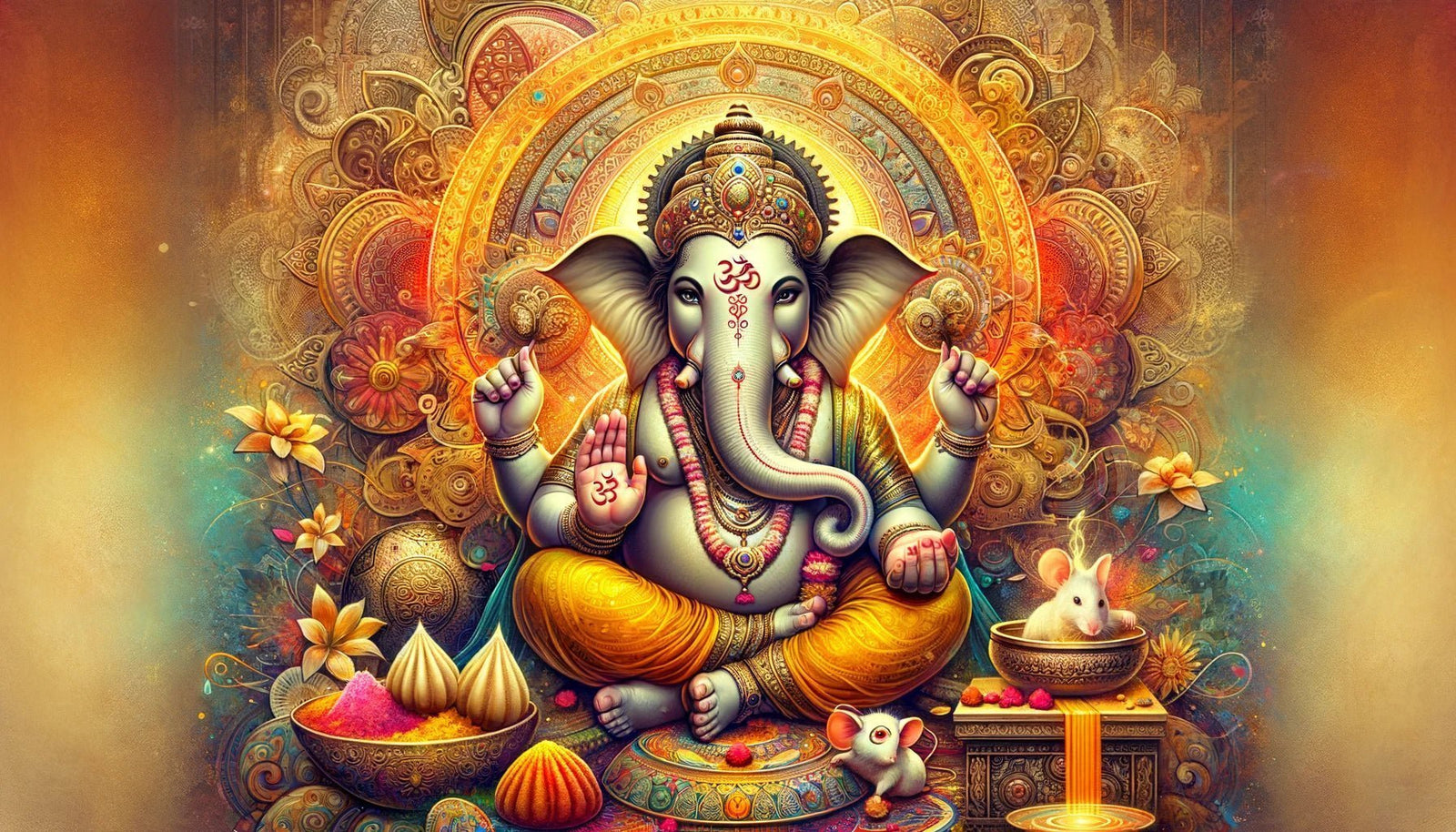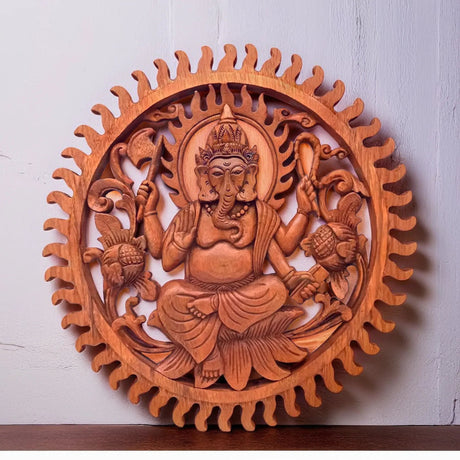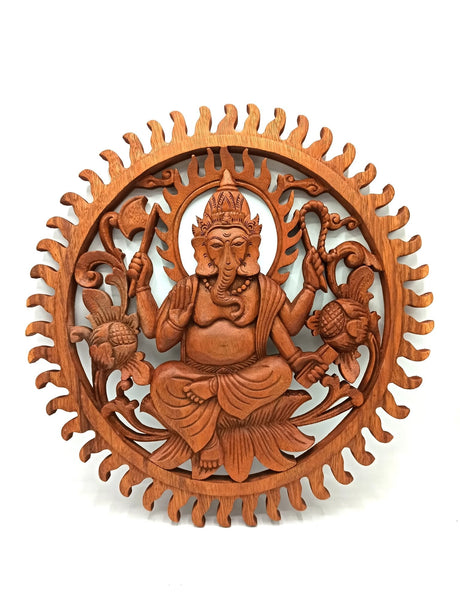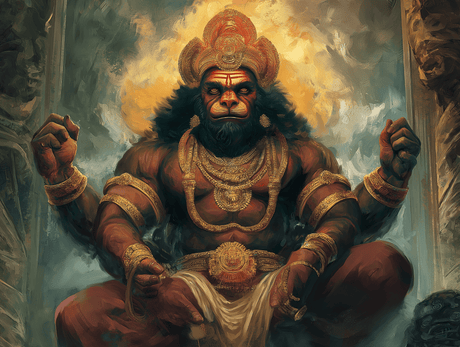In the vast pantheon of Hindu deities, Ganesha stands out with his unique elephant head and human body, embodying wisdom, prosperity, and the removal of obstacles. Known by multiple names such as Ganapati, Vinayaka, and Pillaiyar, Ganesha's presence is ubiquitous across India and beyond, extending to Jainism, Buddhism, and even reaching the shores of Southeast Asia. His story, from ancient scriptures to modern-day worship, encapsulates a deity whose essence is intertwined with the spiritual and the worldly, making him a figure of reverence and fascination. Ganesha, also spelled Ganesh and acknowledged as the Supreme God in the Ganapatya sect, commands a significant place in the Hindu pantheon. Renowned as one of the most worshipped deities, his depictions are prevalent throughout India, transcending Hindu denominational affiliations. This broad devotion to Ganesha spreads across Jains and Buddhists, illustrating his universal appeal and the widespread diffusion of his worship beyond the geographical boundaries of India.
Who is Ganesha?
Ganesha, or Gaṇeśa, signifies the "Lord of the People" and "Lord of the Ganas (Shiva's goblin hosts)". His form is symbolic, combining the physical (maya) and the soul (atman), guiding followers in both intellectual pursuits and the overcoming of physical challenges. As the Supreme God in the Ganapatya sect, his influence pervades across Hindu denominations, Jainism, Buddhism, and even in cultures beyond India.
Appearance and Symbols
Ganesha's depiction with an elephant head and four arms is rich in symbolism. His large ears listen to the prayers of the faithful, his potbelly contains infinite universes, and his vehicle, the large Indian bandicoot rat, reflects his ability to navigate through any obstacle to achieve his goals. Often seen holding Indian sweets, Ganesha's fondness for modakas is both a charming trait and a symbol of the sweet rewards of devotion and wisdom.

The Significance of Ganesha
Ganesha holds profound significance across cultures for several compelling reasons:
- Remover of Obstacles. He is worshipped as Vighnaharta, the one who clears the path of all hurdles, making him essential for starting new ventures and ceremonies.
- God of Beginnings. Invoked at the outset of significant endeavors, Ganesha ensures auspicious starts and successful outcomes.
- Patron of Arts and Sciences. His association with wisdom and creativity makes him a revered figure among scholars, artists, and educators.
- Universal Appeal. Ganesha's worship transcends sectarian and geographical boundaries, embodying values like intelligence, perseverance, and the overcoming of adversity.
- Iconography. His unique elephant-headed form is rich in symbolic meanings, representing wisdom, understanding, and a listening ear to the needs of his devotees.
- Cultural Celebrations. Ganesha Chaturthi, a major festival in his honor, underscores his importance in bringing communities together.
- Inclusivity in Worship. His appeal is not limited to Hinduism but extends to Jainism and Buddhism, reflecting his broad relevance.
32 Forms of Ganesha
Lord Ganesha's diverse incarnations embody unique symbolism and significance, enriching Hindu spirituality. This exploration unveils the 32 distinct forms of Ganesha, each with its own profound meaning.
- Bala Ganapati. "Childlike Ganapati" symbolizes innocence and the divine child, holding the earth's bounty.
- Taruna Ganapati. "Youthful Ganapati" embodies the freshness and promise of youth.
- Bhakti Ganapati. "Devotee Ganapati" represents the pure devotion and joy of worship.
- Vira Ganapati. "Valiant Ganapati" symbolizes courage and protection against adversity.
- Śakti Ganapati. "Powerful Ganapati" stands for strength and the empowerment of the divine shakti.
- Dvija Gaṇapati: "Twice-Born Ganapati" reflects rebirth and spiritual enlightenment.
- Siddhi Ganapati. "Accomplished Ganapati" signifies the attainment of success and mastery.
- Ucchishta Ganapati. "Remnant Devouring Ganapati" emphasizes the sanctity of offerings and leftovers.
- Vighna Ganapati. "Lord of Obstacles Ganapati" guards against hindrances on the spiritual path.
- Kshipra Ganapati. "Quick-acting Ganapati" offers swift blessings and boons to his devotees.
- Heramba Ganapati. "Mother's Beloved Son" Ganapati highlights the maternal bond and protection.
- Śri Ganapati. "Fortunate Ganapati" draws parallels with Goddess Lakshmi, bestowing prosperity.
- Maha Ganapati. "Great Ganapati" denotes extensive power and universal wisdom.
- Vijaya Ganapati. "Victorious Ganapati" embodies triumph over challenges.
- Nrtya Gaṇapati. "Dancer Ganapati" celebrates joy, creativity, and the arts.
- Urdhva Ganapati. "Elevated Ganapati" symbolizes ascension and higher consciousness.
- Ekakshara Ganapati. Associated with the single syllable "gam", linking directly to cosmic sounds.
- Vara Ganapati. "Boon-giver Ganapati" generously offers blessings and fulfillments of wishes.
- Tryakshara Ganapati. Represents the foundational AUM mantra, encompassing all of existence.
- Kshirpra Prasada Ganapati. "Quick-Rewarder Ganapati" ensures prompt divine recompense.
- Haridra Ganapati. "Turmeric-colored Ganapati" invokes healing and purity.
- Ekdanta Ganapati. "Single Tusked Ganapati" signifies the sacrifice for greater good.
- Srishti Ganapati. "Creator Ganapati" highlights creativity and the manifestation of ideas.
- Uddanda Ganapati. "Unchained Ganapati" champions freedom and overcoming restrictions.
- Rinamochana Ganapati. "Debt-liberator Ganapati" provides relief from financial burdens.
- Dhundhi Ganapati. "Sought After Ganapati" symbolizes the pursuit of spiritual goals.
- Dvimukha Ganapati. "Two-faced Ganapati" offers insights into duality and perception.
- Trimukha Ganapati. "Three-faced Ganapati" embodies a comprehensive view of the past, present, and future.
- Sinha Ganapati. "Lion Ganapati" represents strength and fearlessness.
- Yoga Ganapati. "Ascetic Ganapati" underscores discipline and the pursuit of spiritual practice.
- Durga Ganapati. "Invincible Ganapati" mirrors Goddess Durga's protective and victorious nature.
- Sankatahara Ganapati. "Trouble Dispeller Ganapati" ensures the alleviation of sufferings and hardships.

India, Bangalore Gallery Photo @pervovme
Etymology and Other Names
The name "Ganesha" is a compound of "gana", indicating a group or category, and "isha", meaning lord or master. This reflects his role as the master of obstacles, both creating and removing them as deemed necessary. Other names like Ganapati and Vinayaka highlight his leadership and pioneering attributes, while Vighneshvara underscores his role as the remover of obstacles.
The Divine Birth and Transformation of Ganesha
The legend of how Ganesha came to be is one of the most captivating tales in Hindu mythology, embodying themes of creation, transformation, and divine intervention.
According to the most popular version, Ganesha was created by Goddess Parvati, the consort of Lord Shiva. Parvati, desiring a guard while she bathed, created Ganesha out of turmeric paste she used for her body, animating him with her divine powers. She tasked him with guarding the entrance to her bathroom, instructing him to allow no one to enter.
When Shiva returned and sought to enter, Ganesha, not recognizing him, refused to allow him passage. Enraged by the audacity of this unknown boy who dared to defy him, Shiva, the destroyer among the Trinity, engaged in a fierce battle with Ganesha. Despite Ganesha's valiant efforts, he was no match for Shiva, who decapitated him with his trident.
Parvati, upon discovering what had transpired, was overcome with grief and anger. She demanded that Shiva restore their son to life. To placate her and rectify his action, Shiva ordered his followers, the Ganas, to bring the head of the first creature they encountered. They came upon an elephant, decapitated it, and brought the head back to Shiva. Shiva placed the elephant's head onto Ganesha's body, bringing him back to life. Thus, Ganesha came to have an elephant's head, symbolizing wisdom, and a human body.
Shiva also bestowed upon Ganesha the boon that he would be worshipped first, before any other gods, securing his status as the remover of obstacles and the god of new beginnings. This story not only illustrates Ganesha's creation but also highlights the themes of devotion, the impermanence of form, and the power of divine grace.

Features and Attributes
Ganesha's multifaceted nature is not only fascinating but also deeply symbolic, embodying various aspects of life and spirituality. Here are some of his key features and attributes:
- Removal of Obstacles (Vighneshvara). Known as Vighneshvara or Vighnaharta, Ganesha is celebrated as the Lord of Obstacles. He possesses the unique dual role of placing obstacles in the paths of those who need to be checked and removing them to aid his devotees. This duality signifies his deep connection with the cosmic dharma, ensuring that challenges are both a test and a testament to a devotee's faith and perseverance.
- Buddhi (Intelligence). Ganesha is revered as the deity of intellect, wisdom, and learning. The Sanskrit term "buddhi" is closely associated with Ganesha, highlighting his dominion over the realms of knowledge and understanding. He is fondly referred to as Buddhipriya, indicating his love for intelligence and wisdom. This association underscores the belief that wisdom is the key to overcoming obstacles and achieving enlightenment.
- Om (The Primal Sound). Ganesha's identity is intricately linked with the sacred syllable Om, believed to be the primordial sound of the universe. He is often referred to as oṃkārasvarūpa, embodying the essence of Om and its omnipresent nature. This connection highlights Ganesha's universal significance and his encompassing presence in all realms of existence—earthly (Bhuloka), atmospheric (Antariksha-loka), and celestial (Swargaloka).
- First Chakra (Muladhara). Ganesha is believed to reside in the Muladhara chakra, the first and foundational chakra according to Kundalini yoga. This chakra represents the grounding force that supports and guides the spiritual journey from the material to the divine. Ganesha's association with the Muladhara chakra emphasizes his role as the stabilizing force that nurtures and protects the spiritual ascension of his devotees, governing the life force that propels the wheel of existence.
Through these attributes, Ganesha emerges not just as a deity to be worshipped but as a profound symbol of life's cyclical nature, from the overcoming of obstacles to the pursuit of knowledge and enlightenment. His enduring appeal across cultures and ages speaks to the universal values he represents — resilience in the face of adversity, the pursuit of wisdom, and the eternal journey towards spiritual awakening.

Contemporary Relevance
In the dynamic rhythm of modern life, the symbolism of Ganesha resonates more than ever, guiding individuals to navigate challenges with wisdom and grace. The Ganesh Chaturthi festival, also known as Vinayak Chaturthi or Ganeshotsav, celebrates this deity's enduring relevance, marking a time when clay murtis of Ganesha are venerated in homes and public pandals amidst the chanting of Vedic hymns and the offering of his favorite sweets, modaks. This ten-day festival, culminating in the visarjana ritual—where murtis are immersed in water, symbolizes Ganesha's return to his divine abode, embodying his roles as the God of New Beginnings, the Remover of Obstacles, and the deity of wisdom and intelligence.
Global in its celebration, Ganesh Chaturthi fosters unity among Hindus worldwide, from India to diaspora communities in Australia, Canada, the UK, and the USA, underlining a shared cultural heritage. Initiated by Lokamanya Bal Gangadhar Tilak in 1893 as a form of resistance against British colonial rule, the festival has grown into a significant expression of Hindu identity.
The observance involves Prana Pratishtha and Shodashopachara rituals, during which devotees offer coconut, jaggery, and red hibiscus flowers to Ganesha. Artisans contribute to the festivity by crafting detailed murtis, ranging in size for both personal and communal worship. On the final day, the tradition of Ganesh visarjan represents a symbolic farewell to Ganesha, as devotees immerse the idols in water, believing that he takes their obstacles with him.
Ganesh Chaturthi thus encapsulates Ganesha's significant impact on spiritual and everyday life, highlighting his ability to remove obstacles and inaugurate new phases with wisdom, illustrating his timeless teachings' relevance in the contemporary world.

Conclusion
Ganesha bridges the earthly and divine, offering wisdom and guidance through life's challenges. His universal appeal as the remover of obstacles, patron of arts and sciences, and god of beginnings enriches every endeavor. Embracing Ganesha's wisdom provides the strength to overcome obstacles and embark on new journeys with confidence.
At SHAMTAM, we celebrate Ganesha's influence with a variety of Ganesha-themed items, including tapestries and statues, designed to connect you with his divine energy. Our collection aims to bring Ganesha's auspicious presence into your life and home, offering inspiration and positivity for all who seek it.





























